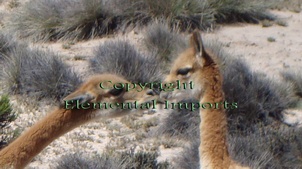 The Story of the Inca’s and the Vicuna As ancient civilizations sprang up across the planet thousands of years ago, so too the Inca civilization evolved. As with all ancient civilizations, its exact origins are unknown. Their historic record, as with all other tribes evolving on the planet at that time, would be recorded through oral tradition, stone, pottery, gold and silver jewelry, and woven in the tapestry of the people. The Story of the Inca’s and the Vicuna As ancient civilizations sprang up across the planet thousands of years ago, so too the Inca civilization evolved. As with all ancient civilizations, its exact origins are unknown. Their historic record, as with all other tribes evolving on the planet at that time, would be recorded through oral tradition, stone, pottery, gold and silver jewelry, and woven in the tapestry of the people.
The Inca of Peru have long held a mystical fascination for people of the western world. Four hundred years ago the fabulous wealth in gold and silver possessed by these people was discovered, then systematically pillaged and plundered by Spanish conquistadors. The booty they carried home altered the whole European economic system. And in their wake, they left a highly developed civilization in tatters. It is difficult to pathom that a single government could control many diverse tribes, many of which were secreted in the most obscure of mountain hideaways accross South America, with such organizaion and ease.
The incredibly rapid expansion of the Inca Empire began with Viracocha’s son Pachacuti, who was one of the great conquerors, and one of the great men in the history of the Americas. As a civil planner he began building the roads and steps that lead to highest mountains, which are home of the Alpaca and Vicuna.
The Alpaca and much smaller cousin, the Vicuna are members of the camelid family. The Alpaca served the Inca people in many facets. Due to the nature and termal properties of their fur, the Alpaca are able exist in realatively harsh environments high in the peaks of the South American mountains of Peru, Chile, Argentina, Bolivia.
Since the time of the spanish conquest the fur of the Vicuuna and Alpaca have been saught after by many people throughout the world. At a price of $255 a pound ($600 USD/Kg) for raw fleece one can see why. The ancient Incans used the fur of the Vicuna to make the textiles for the royal families and nobleman. Upon the conquest of Cusco, the Inkan Capital, the western world was introduced to this luxury fur.

Unfortunately its precious fleece has worked against the species. Poachers working in stealth shot whole family groups with such deadly efficiency that by 1974 fewer than 8,000 animals survived in all of the Andes. With extinction a real possibility for this most diminutive and graceful member of the camel family, conservationists in Peru and the international community responded, and the species was declared endangered. With its listing on Appendix I of the Convention on International Trade in Endangered Species (CITES), trade in vicunas and their fleece was forbidden.
 With the Peruvian vicuna head count at more than 103,000 — around 30,000 in Argentina, 16,000 in Chile, perhaps 16,000 in Bolivia, and a small transplanted herd in Ecuador –the vicuna has rebounded throughout much of its historic range. The challenge facing vicuna policy makers in all four countries is how to allow commercial harvesting in a way that includes indigenous villagers but at the same time discourages the illegal poaching. With the Peruvian vicuna head count at more than 103,000 — around 30,000 in Argentina, 16,000 in Chile, perhaps 16,000 in Bolivia, and a small transplanted herd in Ecuador –the vicuna has rebounded throughout much of its historic range. The challenge facing vicuna policy makers in all four countries is how to allow commercial harvesting in a way that includes indigenous villagers but at the same time discourages the illegal poaching.
|